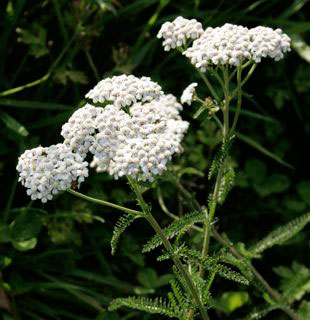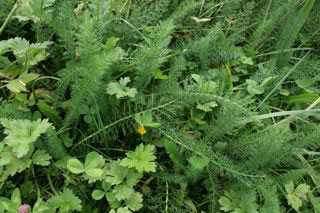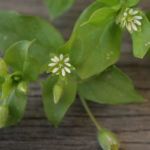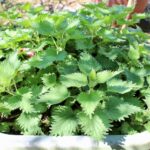This feathery leaved perennial grows in patches on cultivated land, road sides, lawns or in pasture. It has a pleasant smell and sends up tall flower stalks about 50cm high with clusters of white or occasionally pink flowers. It grows on arable land, waste areas, road-sides, and lawns and spreads by creeping underground roots.
Nutritional qualities
Yarrow has been used medicinally since the time of the warrior athlete Achilles and it is named after him. He is said to have healed his battle wounds with yarrow and carried it with him to bind the wounds of his soldiers. Yarrow has astringent (meaning “to bind fast”) properties for healing wounds. It is also used in the treatment of all fevers, hemorrhages, diarrhea, respiratory illnesses and rheumatism.
Both the leaves and flowers of yarrow are edible and highly nutritious. The plant has several phytochemicals called flavonoids, which have anti-inflammatory, antimicrobial, anti-tumour and antioxidant properties. These flavonoids also improve digestion and appetite by increasing the secretions of saliva, bile and other stomach acids, thus helping ease heartburn and acid reflux.
As a traditional herbal remedy, the flower stalks with the flower heads were gathered during the summer months and allowed to dry. Women made yarrow tea to relieve heavy menstruation, also period pains, and children drank the tea to alleviate hay fever and sinusitis. During the winter months yarrow tea helped relieve the symptoms of colds, coughs and flu.
This ancient healing plant is a good one to include in your smoothie.






I see you don’t monetize your website, don’t waste your traffic,
you can earn additional bucks every month because you’ve got hi quality content.
If you want to know how to make extra money,
search for: Mrdalekjd methods for $$$